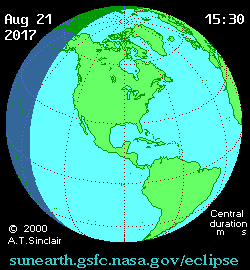Our first impression of Augusta was not all that great, just suburban sprawl/strip shopping centers. A stop at their Walmart to replace some forgotten items made us very appreciative of our Walmart at home.
However, things got better with several stops the next morning.
Augusta National. For the record, I want the golfers in the family to know we drove by Augusta National Golf Club, home of the Masters Tournament. I did not take any pictures because there was was nowhere to stop and there was nothing to see except high fences and high shrubbery. There were no identification signs, not even "keep out" signs. We only knew the location from looking at the map ahead of time.
Augusta Riverwalk. Our next stop was a short walk along the Savannah River. Augusta has created a beautiful park on top of and along the flood control levee which they call the Riverwalk. We were really impressed by how nice it was. The levee was built in the 1930's after several major floods. However, it cut off the city from the river. As part of the renaissance of the downtown area in the 1980's, breaches were cut into the levee (although it looked like it was set up for flood walls to be put in place when needed) so there would be access between downtown and the river on the same level. They also added brick walkways at both the lower level and along the top. According to this site, the breaches actually required an act of Congress for the Army Corps of Engineers to issue permits for the cuts.
 |
| Brick walkway along the top of the Augusta Riverwalk near Ninth Street |
Whatever was required to get it done, we were impressed with the current state of this beautiful park area. It was fairly early on a Saturday morning, but there was already a lot of activity and live music.
 |
| Looking down on the Savannah River from atop the levee. A corner of the band shell is visible near the center. |
 |
| One of many signs along the Riverwalk |
However, in terms of Augusta's history, the whole river thing is more than just location at the end of the navigation. An Augusta native had the idea in the 1840's to build a canal, now known as the Augusta Canal, along the side of the river. Because of the Fall Line and hence the change in elevation, water would run swiftly through the canal and provide a means to run mills of various types. He wanted to make Augusta the Lowell, Massachusetts of the south. It turned out to be a great success. The history of the Canal is the history of the Industrial Revolution in the South.
By 1847 the first factories – a saw mill and a grist mill-- were built, the first of many that would eventually line the Canal. By the time of the Civil War, Augusta had become one of the South’s few manufacturing centers and hence became the center for Confederate powder and munitions plants.
After the war, there was even more growth with massive textile mills. This went into decline by the mid-20th century and the canal went through a period of neglect. The city has since renovated it and made it into a major recreational feature with adjacent hiking and biking paths. From what we could see, it was very nice.
The Augusta Canal and some of the old mills are now a National Heritage Area. All of this history was explained extraordinarily well in a wonderful museum called the Augusta Canal Discovery Center, which we enjoyed immensely. It covered both the building and functioning of the canal and the many different industries that used the canal. Unfortunately I did not take many pictures, but I did take a picture of some of the equipment used to make cotton thread and cotton cloth.
 |
| Some of the apparatus for making cotton, with the Frog for scale. |
All of this was very interesting. We really enjoyed our time here, but we had more miles to go. Next stop is Charleston.












